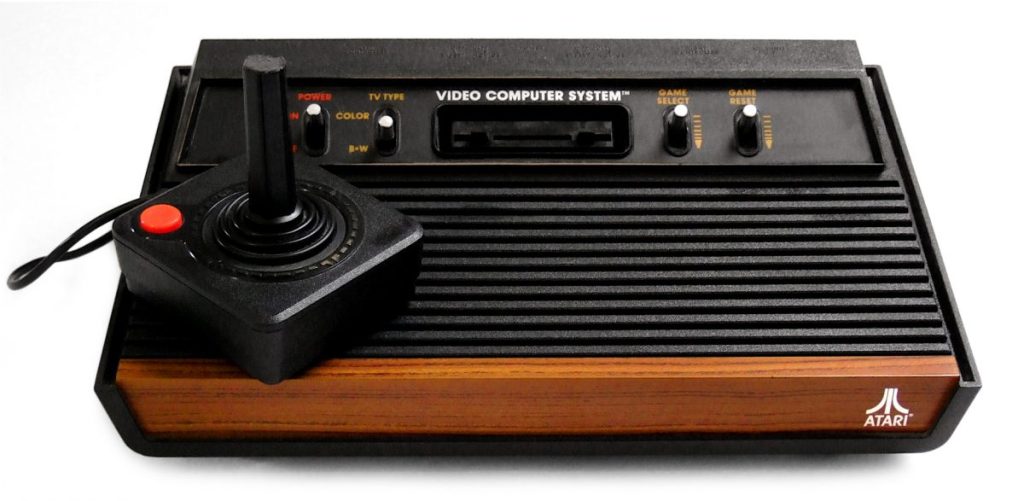The living room today is a battleground for entertainment supremacy. From high-definition televisions to virtual reality headsets, our options for interactive leisure are vast. But this wasn’t always the case. In fact, the concept of video games enjoyed on the comfort of your couch is a relatively recent invention. Here, we delve into the history of the Magnavox Odyssey, the trailblazer that ignited the home video game console revolution.
A Visionary Engineer and the Birth of an Idea:
The story begins in the early 1960s with Ralph Baer, a German-American engineer employed by Sanders Associates, a defense contractor. Baer, fascinated by the emerging field of computer technology, envisioned a device that could bring interactive games to the home television. This was a radical idea at the time, as games were primarily confined to arcades or complex mainframe computers.

From “Brown Box” to Household Name:
Baer’s initial prototype, nicknamed the “Brown Box,” was a rudimentary contraption cobbled together from various electronic components. However, it possessed the core functionality of a video game console – the ability to generate simple graphics and interact with a joystick controller. Recognizing the potential of Baer’s invention, Sanders Associates partnered with Magnavox, a leading television manufacturer, to develop a commercial product.
The Arrival of the Odyssey in 1972:
After years of refinement, the Magnavox Odyssey was unveiled to the world in 1972. Unlike modern consoles with pre-loaded games, the Odyssey came with a set of overlays and transparent sheets that players placed on their television screens. These overlays transformed the screen into a virtual playing field, allowing users to engage in a variety of rudimentary games, including table tennis, tennis, and even a rudimentary shooting game.

Beyond Pong: A Diverse Library for a New Era:
While the games themselves were simple by today’s standards, the Odyssey offered a level of interactivity previously unavailable in the home. The console shipped with 28 game variations, achieved through a combination of the overlays and ingenious internal circuitry. This variety, coupled with the novelty of playing games directly on a television, proved to be a hit with consumers.
Technical Limitations and Enduring Legacy:
Despite its groundbreaking nature, the Odyssey wasn’t without limitations. The graphics were basic, monochrome shapes, and the controls were rudimentary. Additionally, unlike later consoles, the Odyssey lacked interchangeable cartridges, restricting players to the bundled games. However, these limitations did not overshadow the console’s historical significance.

A Spark that Ignited an Industry:
The success of the Magnavox Odyssey opened the floodgates for a new era of home entertainment. It inspired a wave of competitors, including Atari, whose iconic Pong console further popularized the concept. The Odyssey’s legacy extends beyond its own sales figures. It established the core design principles that future consoles would follow: a dedicated console unit connected to a television, offering interactive gameplay experiences.
A Stepping Stone to the Gaming Giants of Today:
The Magnavox Odyssey may seem primitive compared to the immersive worlds of modern consoles like the PlayStation 5 or the Xbox Series X. However, its impact on the video game industry is undeniable. It paved the way for the multi-billion dollar industry we know today, filled with complex games, online connectivity, and virtual reality experiences.
Gameplay and mechanics of early console games
The first home video game consoles, like the groundbreaking Magnavox Odyssey, may seem like ancient artifacts compared to the visually stunning and narratively complex games of today. However, these early pioneers laid the groundwork for modern gaming with innovative (for their time) mechanics and surprisingly diverse gameplay. Let’s delve into the world of pixels and explore what made these early console games tick.
Simplicity at its Core:
Early console games were all about stripped-down mechanics. Processing power and memory limitations meant that complex storylines and intricate characters were out of the question. Instead, gameplay focused on core concepts like reflexes, hand-eye coordination, and basic strategy. Think Pong variations, rudimentary racing games, and digital versions of classic tabletop games like tennis or handball.
Innovation Through Overlays and Peripherals:
Limited graphics were often compensated for by clever use of overlays and light gun peripherals. The Magnavox Odyssey, for example, came with various overlays that transformed the TV screen into different playing fields. Light guns, introduced with later consoles, added a layer of physical interaction to basic shooting games.
High Score Chasing:
Early games heavily emphasized high score chasing. With limited narratives or branching storylines, competition and self-improvement became the driving force. Players strived to beat their own high scores and compete with friends for bragging rights. This emphasis on competition helped foster a sense of community among early gamers.
Emerging Genres:
Despite their simplicity, early consoles laid the foundation for various game genres. Sports games, racing games, and rudimentary platformers all found their roots in these early systems. These foundational concepts, though vastly more sophisticated today, continue to define major gaming genres.
Learning Curve and Skill Progression:
While seemingly basic by modern standards, early console games often had a surprising learning curve. Mastering the controls, understanding game mechanics, and developing strategies for high scores all required dedication and practice. This sense of progression and skill development kept players engaged and coming back for more.
The early days of console gaming were a time of innovation fueled by limitations. Despite the lack of graphical fidelity and complex narratives, these early games offered a captivating blend of simple mechanics, competition, and the thrill of mastering a new skill. Their legacy lives on in the diverse and ever-evolving world of video games we enjoy today.
Lasting impact on gaming culture and technology
The Magnavox Odyssey, the trailblazer of home video game consoles, wasn’t just a box of rudimentary games. Its impact extends far beyond flickering monochrome shapes, leaving an indelible mark on both gaming culture and technology.
-
From Niche to Mainstream: Prior to the Odyssey, video games were largely confined to arcades or complex computers. The Odyssey brought interactive entertainment into the living room, fostering a new form of leisure activity accessible to everyone. This accessibility helped turn video games from a niche hobby into a mainstream cultural phenomenon.
-
Building a Community: The Odyssey, with its variety of games, encouraged social interaction. Families and friends could gather around the television, competing and collaborating in virtual worlds. This fostered a sense of community among gamers, laying the groundwork for the thriving online gaming communities of today.
-
A Breeding Ground for Innovation: The success of the Odyssey ignited a firestorm of competition. Companies like Atari rushed to capitalize on the burgeoning market, leading to a constant push for innovation. This drive for better graphics, more complex gameplay, and new peripherals continues to propel the gaming industry forward.
-
Narrative Powerhouse: While the Odyssey’s games were simple, they offered a glimpse into the narrative potential of video games. Players weren’t just manipulating dots on a screen; they were creating stories through their actions. This paved the way for the rich narratives that define many modern games.
-
Technological Catalyst: The Odyssey’s need for powerful processors and innovative display techniques spurred advancements in computer graphics and display technology. This ripple effect extended beyond gaming, influencing other fields that rely on high-fidelity visuals.
-
A Foundation for the Future: The core design principles established by the Odyssey – a dedicated console connected to a television for interactive play – remain the cornerstone of modern consoles. Additionally, the concept of interchangeable game cartridges, popularized by later consoles, owes a debt to the foundation laid by the Odyssey.
The Magnavox Odyssey may be a relic of the past, but its impact on gaming culture and technology is undeniable. It democratized video games, fostered a sense of community, and ignited a firestorm of innovation that continues to shape our entertainment landscape today.

A Pioneering Spirit and Lasting Impact:
The story of the Magnavox Odyssey is a testament to the power of innovation. Ralph Baer’s visionary idea, coupled with the collaboration between engineers and manufacturers, brought about a technological revolution that continues to shape our leisure activities. While the Odyssey itself may be a relic of the past, its pioneering spirit lives on in every console and video game we enjoy today.



